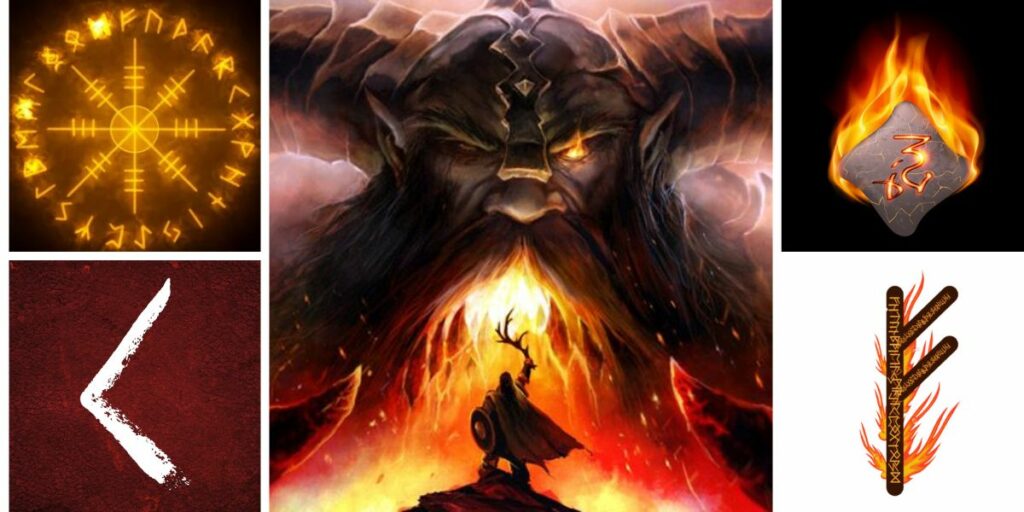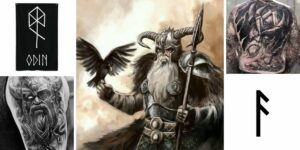For centuries, Viking runes have captivated historians, linguists, and enthusiasts alike with their mystique and layered symbolism. Far more than a simple alphabet, the Elder Futhark – the oldest form of the Norse runic system – carried deep cultural and spiritual meaning for the ancient Scandinavian peoples. Each rune was tied to elemental forces, mythology, and even magical practices, serving as both a letter and a potent symbol. Among these, the Viking rune for fire stands out as a representation of warmth, transformation, and creative energy.
Known as Kenaz in modern scholarship, this rune embodies the fire’s ability to both illuminate and destroy, echoing themes found in Norse myths about gods such as Odin and Freya. Like the flames of Muspelheim or the guiding torch in a darkened hall, Kenaz links the material world with the divine. But what exactly is the Viking rune for fire? Is it Kenaz, Kaunaz, or something else entirely? And how does it fit within the broader world of Norse runes and their meanings? Let’s explore.
>>> Laguz Rune: The Viking Rune for Water – Meaning, Healing, and Symbolism
What is the Viking Rune for Fire?
The Viking rune for fire is Kenaz – the sixth rune in the Elder Futhark, with a phonetic value of “K” or hard “C.” Visually, it resembles an angled arrow or an open flame, evoking the image of a torch held aloft in darkness. In the Proto-Germanic language, the word kanō meant “torch” or “lamp,” linking fire not only to heat and light but also to the metaphorical concept of knowledge.
Kenaz’s meaning extends far beyond the physical flame. In the realm of Viking rune symbols and meanings, it represents controlled fire – the forge’s heat that shapes weapons and tools, the hearth’s warmth that sustains life, and the inner spark that drives creativity and learning. This is not the wild, destructive blaze of Muspelheim’s fire giants, but rather a disciplined, purposeful energy.
In Norse mythology, fire often signified transformation. Just as flames can purify metal or clear a forest for new growth, Kenaz symbolises personal growth, enlightenment, and the courage to forge one’s own path. Within the Elder Futhark’s 24-rune sequence, Kenaz appears in the first aett (or family), which is often linked to creation, fertility, and the life-sustaining forces of nature. As such, it sits alongside other powerful symbols like Fehu, yet it holds its own distinct identity as the fire rune Norse tradition most clearly associates with illumination.

Is it Kenaz or Kaunaz? Clarifying Variations
The name Kenaz is the standard modern scholarly reconstruction from Proto-Germanic, but in historical sources such as the Norwegian and Icelandic rune poems, the rune appears as Kaunaz or simply Kaun. These earlier names carried a secondary meaning: “ulcer” or “boil” – an allusion to fire’s painful yet cleansing nature. In this sense, fire could burn away illness or corruption, aligning with the idea of purification through trial.
Variations also appeared in Anglo-Saxon traditions, where the rune was known as Cen, and in Gothic or other Germanic systems, where it might be called Kano. While the names differ, the core symbolism – fire as knowledge, transformation, and guidance – remains consistent.
For those considering a Viking rune for fire tattoo, understanding these variations is essential. While Kenaz is the most recognisable and widely accepted name today, using Kaunaz in a design might appeal to those drawn to the rune’s more visceral, purgative aspects. In any case, accurate depiction matters; avoid modern stylisations that distort its shape, and choose a form that resonates with your intended meaning – whether it’s passion, creativity, or resilience.
>>> Unveiling the Viking Rune for Fire: Kenaz and Its Ancient Power in Norse Lore
What is the Fire Element Rune? Exploring Elemental Ties
In Norse runes, each symbol resonates with elements of the natural world, and Kenaz is unequivocally tied to the element of fire. This association captures the element’s duality: it can consume forests, yet it can also forge iron, cook food, and provide light in the endless winter nights of the north.
In myth, this duality is echoed in stories like Ragnarök, where the fires of Muspelheim, led by the fire giant Surtr, destroy the old world – but also clear the way for a renewed one. Kenaz also connects to Freya, the goddess of love and passion, framing fire as erotic energy and a spark of life.
By contrast, the Fehu rune – though sometimes linked symbolically to energy – is primarily about wealth, prosperity, and cattle, not fire. This distinction helps avoid common confusions for beginners in rune studies.
In the Elder Futhark, Kenaz belongs to the first aett, traditionally associated with fertility, growth, and the creative forces that shape existence. Practically, Kenaz could be carved into amulets for focus during creative work, inscribed on ritual tools to invoke inspiration, or meditated upon as a way to “light one’s inner torch.” Such uses fit squarely within the broader tradition of Viking rune symbols and meanings.
>>> Introduction to the Viking Runic Alphabet
What is the Viking Symbol for B? Connections and Misconceptions
A common beginner’s question is whether there’s a Viking rune for B that relates to fire. The answer: not directly. The rune Berkano (or Berkana) represents the “B” sound in the Elder Futhark. Its symbolism is rooted in the birch tree, representing growth, fertility, and nurturing – decidedly different from fire’s transformative heat.
However, some newcomers confuse Kenaz’s “K” sound with “B,” leading to misconceptions. While Berkano and Kenaz are unrelated in meaning, they can be paired symbolically: Berkano’s nurturing, life-giving energy complements Kenaz’s illuminating fire. Both are essential forces in Norse cosmology – one representing the fertile earth, the other the purifying flame.
For those exploring Viking rune for fire tattoo designs, combining Kenaz with runes like Sowilo (the sun) can amplify its fire symbolism, while pairing it with Berkano can create a more balanced motif of creation and renewal.
Modern Applications and Cultural Legacy
Today, Kenaz continues to inspire artists, spiritual practitioners, and history enthusiasts. Many choose it for tattoos symbolising enlightenment, passion, or creative power – drawing directly on the Viking rune for fire meaning. Others wear it as jewellery, incorporate it into meditation practices, or use it in modern pagan rituals.
However, it’s important to approach Norse runes with respect. They are not merely aesthetic symbols; they are part of a rich cultural heritage. Misusing them can lead to cultural appropriation or distortion of their meanings. Even modern interpretations, such as the Uthark theory, which reorders the runic sequence, treat Kenaz as a rune of enlightenment – further emphasising its enduring symbolic weight.
Conclusion
In the world of Norse runes, Kenaz stands as the definitive Viking rune for fire – a symbol of both destruction and creation, pain and illumination. Rooted in the Elder Futhark and echoing through Norse myth, it continues to inspire those seeking transformation, passion, and knowledge. Whether carved in stone a thousand years ago or inked onto skin today, Kenaz burns as brightly as ever.






Pingback: Laguz Rune: The Viking Rune for Water – Meaning, Healing, and Symbolism - Grizz Studio